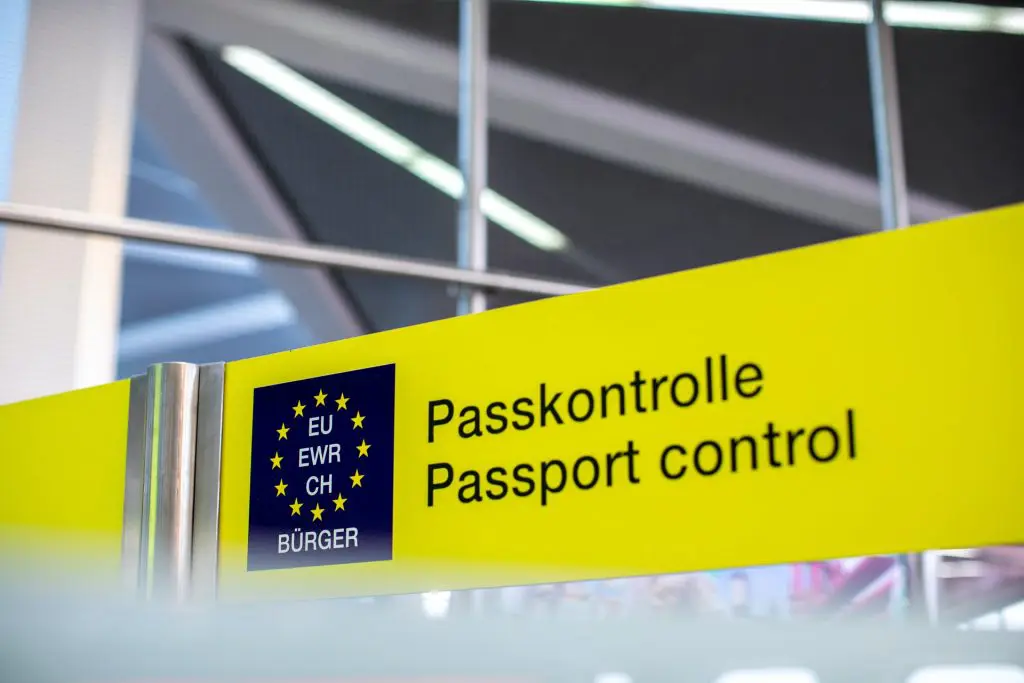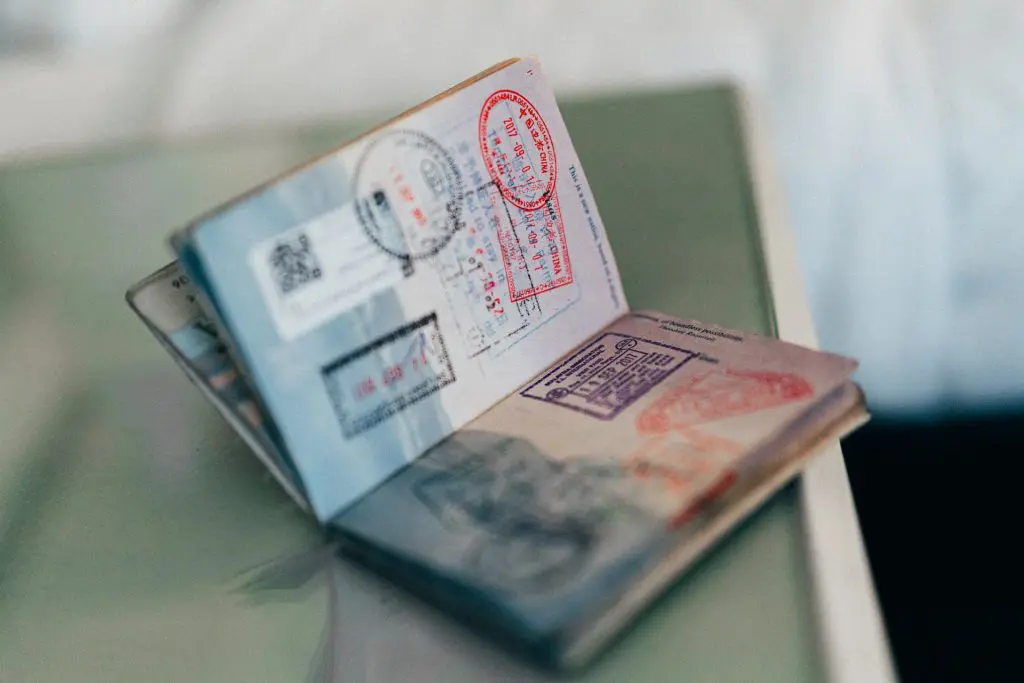Navigating the Schengen Zone as a digital nomad can be confusing, in this article we’re going to explain what visa free travel is, show you sample itineraries of how you can legally travel between the Schengen Zone and Non-Schengen Zone indefinitely, what to do if you overstay your visa, and bilateral agreements which you may want to take advantage of.

Here’s everything you need to know, whether you’re a remote worker, digital nomad, or just want to explore Europe for as long as possible.
Please note: this guide is specifically for nationals who can travel visa-free through the Schengen. For nationals requiring a visa there is a different process and you will need to apply for the visa at the relevant embassy.
Everything you Need to Know About Travel in the Schengen Zone
The Schengen Area is often thought of as being synonymous with the EU, but this is inaccurate. Instead, the Schengen Area is comprised of 26 European countries, most of which (22) are EU members, but several of which (4) are not. Additionally, not all of the EU member states are included in the Schengen Area.
Here is a list of the countries currently included in the Schengen Area:
Austria, Belgium, Czech Republic, Denmark, Estonia, Finland, France, Germany, Greece, Hungary, Iceland, Italy, Latvia, Liechtenstein, Lithuania, Luxembourg, Malta, Netherlands, Norway, Poland, Portugal, Slovakia, Slovenia, Spain, Sweden, and Switzerland.
Although Bulgaria, Croatia, Cyprus and Romania are not currently included, all four have plans to join within the next few years. Although this is not guaranteed, it is worth double checking before you make any plans.
The following passport holders can travel visa-free in the Schengen Zone:
Albania* Andorra Antigua and Barbuda Argentina Australia Bahamas Barbados Bosnia and Herzegovina* Brazil Brunei Canada Chile Colombia Costa Rica Dominica El Salvador Georgia Grenada Guatemala Holy See (Vatican City State) Honduras Hong Kong S.A.R*** Israel Japan Kiribati Macao S.A.R*** Malaysia Marshall Islands Mauritius Mexico Micronesia Moldova* Monaco Montenegro* Nauru New Zealand Nicaragua North Macedonia* Palau Panama Paraguay Peru Saint Kitts and Nevis Saint Lucia Saint Vincent Samoa Serbia* Seychelles Singapore Solomon Islands South Korea Taiwan** Timor Leste Tonga Trinidad and Tobago Tuvalu Ukraine United Arab Emirates United Kingdom United States of America Uruguay Vanuatu Venezuela
Caveats:
*Citizens of Albania, Bosnia and Herzegovina, Macedonia, Moldova, Montenegro and Serbia can travel visa free only if they are holders of biometric passports.
** Taiwanese passport holders are entitled to visa-free travel only if their passport contains an identity card number.
*** The visa-free regime only applies to holders of a “Hong Kong Special Administrative Region” passport for Hong Kong and holders of a “Região Administrativa Especial de Macau” passport for Macau.
What Does Visa-Free Travel Mean?
First, let’s clarify what it doesn’t mean. Visa-free travel is only applicable to tourism, and does not apply to the following:
- The right to move to or work within the Schengen Zone
- Unlimited travel within the Schengen Zone
So what does visa-free travel entitle you to?
The right to travel through the entire Schengen Zone without a visa for 90 days (be careful as this does NOT mean 3 months) in every 180 days. And this is where it can get a bit confusing.
If you enter the Schengen Zone on January 1st, you can stay until March 31st (30th on a leap year) and travel anywhere you want within the area. After that, you must then leave the Schengen Zone and cannot return until 90 days later, on June 30th.
Alternatively, you can spend part of that 90 days in and part of it out within the entire 180 days.
Some example itineraries include:
January 1st – January 31st: Croatia (non-Schengen Zone)
February 1st – February 28: Slovenia (Schengen Zone)
March 1st – March 31st: Romania (non-Schengen Zone)
April 1st – April 30th: Hungary (Schengen Zone)
May 1st – May 31st: Serbia (non-Schengen Zone)
June 1st – June 30th: Austria (Schengen Zone)
= 88 days in the Schengen Zone
OR:
January 1st – February 28th: France (Schengen Zone)
March 1st – March 31st: United Kingdom (non-Schengen Zone)
April 1st – May 1st: Belgium (Schengen Zone)
= 90 days in the Schengen Zone
Because the 180 days are rolling, you can technically do this indefinitely. Just make sure you only ever spend 90 out of every 180 days inside the area. Here is a handy calculator to help you keep track.
Read More: 7 Ways to Find Cheap Flights (for Thrifty Digital Nomads)
What Happens if I Overstay in the Schengen Zone?

Please don’t do this. If caught, you will likely get a fine and an overstay stamp in your passport, which can get you banned from visiting the Schengen. For some people, this will still mean they can visit but MUST apply for a visa ahead of time, which can be denied on the basis that you previously overstayed.
If you overstay by up to a week, you will potentially just be fined and given a stern warning. But I wouldn’t chance it because there is absolutely no guarantee.
Plus, an overstay stamp in your passport can cause trouble for you when visiting other countries as they might not want to grant you a visa or let you in if they consider you to be an overstay risk.
Again, it is NOT worth it.
In extraordinary circumstances, a temporary extension is likely to be granted, but must be done through authorities before leaving. This includes for humanitarian reasons such as a death or hospitalisation; and for Force Majeure, meaning when third party nationals are unable to return home for any reason, such as a global pandemic or war.
If you DO overstay, I recommend trying to leave from France, Greece, Italy or Spain. These are known to be the least strict about checking dates. In my personal experience, the Czech Republic also doesn’t seem to look much at dates, but I have never overstayed, so I cannot say for certain that this is the case.
However, I have three friends who overstayed by a few months in Italy several years ago and had zero problems leaving.
But I cannot stress enough how much I am not recommending you do this. Especially as border security within Europe continues to get stricter and stricter.
I also would NOT recommend overstaying, even for a few days, if your next stop is in the UK. I consistently get asked more about my time within the Schengen whenever I arrive in the UK than when I am in the actual Schengen.
If you are leaving France for the UK and have overstayed, even if the French border official does not care or notice, there is a strong chance the UK one will and deny you entry.
Read More: A Complete Guide To Portugal for Digital Nomads (& Remote Workers)
Can I Stay in Europe Longer than 90 Days Visa-Free?
The short answer is yes, absolutely!
But you can’t necessarily do it by staying in the Schengen for that entire time.
If your goal is to travel indefinitely throughout Europe, this is completely doable, and legal, so long as you alternate between Schengen and non-Schengen countries.
If you are granted visa-free travel within the Schengen countries, there is a good chance that you are also entitled to visa-free travel in the non-Schengen European countries. Most of these countries also allow for 90 days in 180.
However, some only allow 30 or 60, which you can check beforehand with the relevant embassy. Or, through your own government’s travel advisory website.
Note: If you can afford it, the UK grants visa-free travel to some nationals for 6 months.
Unlike the Schengen, there is not a definitive public law stating when you can return again. Because of this, some people interpret it to mean 6 months at a time, and that you can leave and come straight back for another 6 months.
My understanding of this has always been that it is 6 months in every 12 months, and this is what I would STRONGLY advise doing to be on the safe side (it is also what most immigration specialists will tell you to do).
As someone who has travelled frequently to the UK over the years, both as a resident and a tourist, I can tell you that they do NOT like people trying to live in the UK illegally and they WILL pull you aside or ban you if they are even a little bit suspicious this is happening.
Additionally, aside from extraordinary circumstances which prevent you from leaving, you are automatically considered a resident for tax purposes if you spend 183 or more days in the UK in the tax year.
As a side note: This is true for pretty much every country in the world in terms of residency for tax purposes, so make sure you are careful not to overstay in any countries you don’t want to be liable to pay additional taxes in.
Read More: European Countries Offering Long Term Visas for Freelancers (+ How to Apply)
Bilateral Agreement Exceptions
Please note: Although most of these agreements are strictly for US Citizens, the Denmark agreement applies to citizens of Australia, Canada, Chile, Israel, Japan, Malaysia, New Zealand, Singapore, South Korea and the USA.
Countries that have bilateral visa agreements allow citizens to stay longer than 90 days within each other’s borders. However, because these agreements pre-date the Schengen treaty, the information is often nearly impossible to find as governments are not eager to publicise the information.

Luckily, there are three options that are somewhat public knowledge that allow some nationals to stay longer within the Schengen Area:
1) France
US Citizens can stay an additional 90 days in France so long as they can prove they spent the extra 90 days in France specifically (this can be done through rental agreements, hotel receipts, etc). This means that you can travel throughout the entire Schengen Area for 90 days and then go to France for a further 90 days.
Or, you can go straight to France and stay for 180 days straight. Again, you might be asked to prove you have not gone into another country for more than 90 days.
Additionally, while the Schengen is a border-free region, it is not unheard of to be stopped at borders, or while travelling intercontinentally on trains and buses and asked for documentation. I have been stopped a handful of times over the years and if you don’t have your paperwork, you can be removed and brought in for questioning.
If you choose this option, you must exit from France. Be prepared to be questioned at the border because while this is the law, they don’t like it and it is actually up to the border agents to decide if they are okay with it. I recommend trying to get it in writing from the relevant embassy (you can email them directly) and showing that at the border if there are any additional issues.
It is also worth noting that the flight out of France MUST be to a non-Schengen country. For example, you cannot fly back to the USA via Iceland or the Netherlands. You could, however, fly back via the UK.
2) Denmark
This works similarly to the France option with one exception.
If you have spent any of your previous 90 days in other Nordic countries*, this time will be deducted from the additional 90 days (in other words, if you spend 90 days in Norway, you cannot have 90 extra days in Denmark).
I am also unsure if you can spend the full 180 days in Denmark. This is because I know two people who have tried this with wildly different results. One was expressly told by their Danish embassy that they could not spend the full 180 days in Denmark and had to enter Denmark from another non-Nordic Schengen country, and this is what she did.
However, the other did not check ahead of time and spent the entire 180 days in Denmark with no issues.
Please consult with your Danish embassy ahead of time and follow their advice. If they advise that you can spend the entire 180 days, keep a copy to show at the border when leaving.
Note: This is the only bilateral agreement that is not just for US Citizens.
*The Nordic countries refers to the countries of Denmark, Finland, Iceland, Norway and Sweden. It also includes the territories of Åland, Faroe Islands, and Greenland.
3) Poland
The Polish option works a bit differently and, technically, allows US citizens to stay indefinitely in the Schengen. However, this option can be costly.
Basically, every 90 days you will need to leave from Poland into a non-Schengen country. Stay in that country for at least 24 hours (I know someone who once went to Ukraine for 2 hours and went back with no issue, but it is recommended you stay for at least 24 hours), and then return.
While leaving via land borders into Ukraine and Belarus are fine, I have heard that leaving by plane is preferred. Do keep in mind that getting visas for Belarus can be difficult, especially if entering by land.
While the exception is meant for Americans staying in Poland, there is no actual restriction for staying there. However, if asked to prove where you have been, or stopped while outside of your 90 day limit in another country, you could face serious consequences.
Equally, just because you CAN theoretically use this to stay indefinitely doesn’t mean that you should. Entering Poland this way does not give you the right to work, and if you stay for 183 days or more, you will be considered a tax resident in Poland.
This means that if you work freelance online, you will still have to pay taxes in Poland, which will be your responsibility to sort out.
The good news is that this exception is fairly well known amongst Polish officials and there seems to be very little issue with using it. I even know someone who was told by a school that using this method was easier than applying for a visa.*
*This is not legal advice, and is purely anecdotal.
3) Hungary
This is the exception I am least familiar with, and I do not know anyone who has taken advantage of it.
To the best of my knowledge, this option works the same as the Poland one, but as it is less well known, you might face more difficulties.
Read More: The Ultimate Guide to Budapest for Digital Nomads
ETIAS: Schengen Visa Free Travel Changes Coming in 2022
Many who have travelled to the USA or Canada in the last few years will be familiar with the simple, but mandatory online ESTA and eTA applications.
Starting in 2022, anyone over 18 entitled to visa-free travel to the Schengen area will now be required to submit a similar application called the European Travel Information and Authorization System (ETIAS). This now includes the UK.
You must apply – and be approved – before your date of travel. The ETIAS will cost €7 (payable by card) and be valid for 3 years, or until your passport expires, whichever event occurs first.
Tip: We’ve covered everything you need to know about the ETIAS visa and how to apply in our guide.
Approval of the ETIAS does not guarantee you entry into the Schengen, and you can still be denied at the border if you do not meet the requirements of entry, such as proof of funds or onward travel.
This change will only apply if you are travelling for tourism purposes and staying less than 90 days. If this is not the case, there may be other visa restrictions you need to consider.
Read More:


